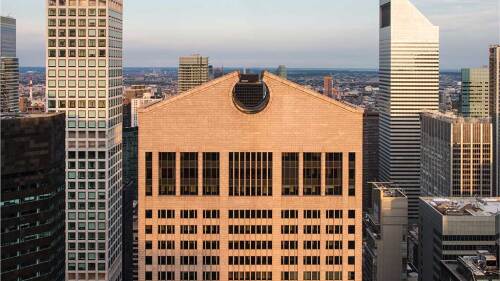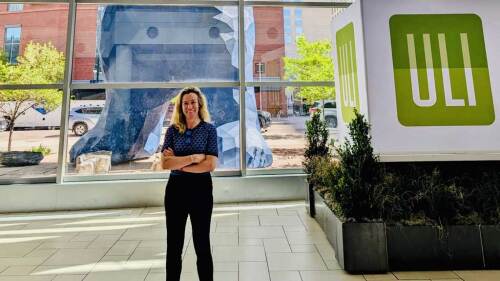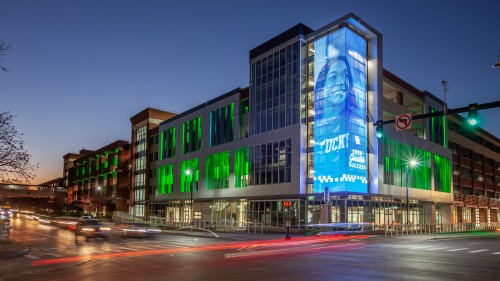Topics
Capital Markets and Finance
The Opportunity Zone program, a national model to spur private investment of housing in underserved areas, has been extended by Congress beyond 2026, marking a significant opportunity for real estate professionals. This innovative initiative not only helps rebuild communities but is a win-win for residents, property developers, and investors. The program’s success in transforming economically distressed areas has proven its value, making it crucial for industry leaders to continue supporting it.
Oracle’s stock recently surged 36 percent in a single day after the announcement of a new deal with OpenAI—a spike that generated an extra $244 billion in market cap for the company. The move fueled increased speculation about a potential AI bubble brewing. Such high-flying stock prices recall the dot-com bubble, when the NASDAQ stock index lost more than 70 percent of its value, dropping from a high of 5,048 in March 2000 to a low of 1,139 in October 2002.
Despite a still tepid transaction market, commercial and multifamily mortgage loan originations increased in the second quarter—up 66 percent compared to a year ago, and up 48 percent from the first quarter of 2025, according to the Mortgage Bankers Association. But what is the outlook for access to debt and equity capital in the second half of the year? Apart from interest rates, where are the biggest pain points in the market for commercial real estate financing?
Design & Planning
In cities large and small around the world—from Columbus, Ohio, to Valencia, Spain—a major focus of modern urban revitalization has been the addition of new sports arenas, purposely built in concert with supportive, mixed-use developments that can become self-sustaining neighborhoods.
In April 2025, ULI San Francisco announced a global call to “reimagine” San Francisco’s famed Market Street, soliciting ideas grounded in ecology, economy, and equality. The goal is to turn the often drab, blighted strip into a series of vibrant, interconnected communities.
Designed by noted architects Philip Johnson and John Burgee and constructed in 1984, 550 Madison Avenue has a curved roof pediment that reminded enough people of Chippendale furniture to earn the nickname “the Chippendale Building.” Globally recognized as an influential postmodern masterpiece, it once served as headquarters for AT&T and later Sony, then became the youngest edifice to be designated a New York City landmark. The Olayan Group purchased it in 2016 to rework the single-tenant tower into a multi-tenant, mixed-use office building that prioritizes occupant wellness and environmental sustainability.
Development and Construction
Baby boomers’ constantly changing demands are affecting the formation, location, and types of living communities for seniors in the United States, and a number of trends are already identifiable. Read about the differing trends as well as current lending and players in senior housing.
The Commercial Mortgage Alert Trepp weekly survey of 15 active portfolio lenders “took a licking” as spreads widened in many sectors of the debt capital markets. Regardless, all-in costs remain in the 5.00+/- percent range and should be range bound for the foreseeable future, subject to a “Black Swan” event (which is not too hard to imagine if one just looks at the newspaper each morning).
The 2010 U.S. Census population figures show that nearly one-fourth of the largest metro areas grew by over 20 percent during the 2000s—with great differences between the two halves of the decade. Read which ten metro areas experienced greater growth in the second half of the decade than the first half.
Resilience and Sustainability
The Trump Administration is proposing further budget cuts to the National Oceanic and Atmospheric Administration (NOAA) for fiscal year 2026, which begins October 1. The agency, a branch of the U.S. Commerce Department, lost about 30 percent of its funding in 2025, and it is set to spend 14 percent less for climate research than Congress mandated. Real estate professionals often rely on NOAA data to make informed investment decisions, and the possible impact of the budget cuts could be significant for the industry.
Formerly at U.S. Department of Energy, Witteman discusses her mission to integrate sustainability and affordability in commercial real estate, revealing how ULI is leading the charge for decarbonized communities.
The opportunity to plan and design more than 50 acres of inner-city urban development in any city is significant, but in Pasadena, California, it is a possible inflection point in the city’s history, an opportunity to redress past mistakes, and to set the stage for future generations to benefit from perceptive and forward-thinking planning.
Issues and Trends
What if you were told that a brand-new, state-of-the-art building constructed today could be functionally obsolete in less than a decade? This prediction isn’t far-fetched; it’s the emerging reality in a world where technology and user expectations are evolving at a breakneck pace. And nowhere is it more apparent than in the world of parking.
Texas has experienced a prolonged economic boom, bringing with it a significant explosion in population. From 2000 to 2023, the state’s population grew by a remarkable 46.3 percent. This level of growth inevitably places pressure on cities, whether to update infrastructure, revise planning regulations, or address other critical urban challenges.
Currently, vacancy rates in the Washington, D.C. area are around 20 percent, in line with the national average. The nationwide housing shortage, meanwhile, has hit a record high of 4.7 million homes, despite a five-year uptrend in new construction. The deficit is particularly pronounced in highly desirable urban and inner-suburban locations such as Alexandria, Virginia.













